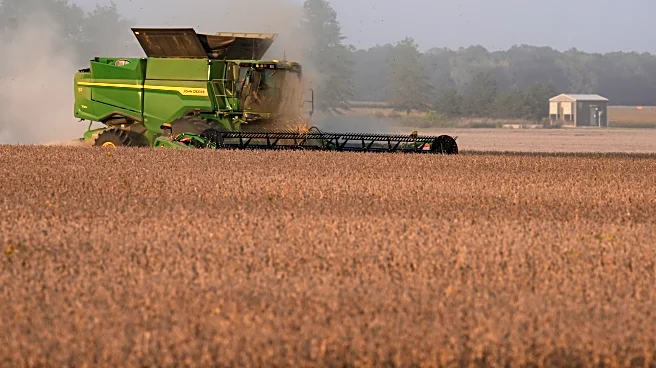What is the story about?
What's Happening?
The U.S. agriculture sector is facing significant challenges due to a government shutdown and changes in tariff rates. Farmers may not receive expected funds or loans in time for harvest, impacting their ability to hire workers and purchase equipment. President Trump's tariff changes have affected soybean farmers in states like Illinois, Iowa, Minnesota, Nebraska, and Indiana, with China reducing its purchase of U.S. soybeans from $14 billion in 2016 to $3.1 billion in 2018. The SNAP program has been cut by $186 billion through 2034, and other federal cuts are planned for small farmers.
Why It's Important?
The government shutdown and tariff changes have significant implications for U.S. agriculture, potentially affecting the livelihoods of farmers and the broader economy. The reduction in soybean exports to China has led to financial losses for farmers, while federal cuts to programs like SNAP could impact food security for vulnerable populations. The situation highlights the need for stable government policies and international trade agreements to support the agriculture sector.
What's Next?
The U.S. government may consider relief packages for affected farmers, with discussions of a $10 billion relief package for soybean farmers. However, some Republican leaders are advocating for a $50 billion package, indicating potential political implications ahead of midterm elections. The agriculture sector may need to explore alternative markets and strategies to mitigate the impact of tariff changes.
Beyond the Headlines
The challenges faced by U.S. agriculture could lead to long-term shifts in farming practices and policies, emphasizing the importance of diversification and resilience against political and economic uncertainties. Ethical considerations arise regarding the equitable distribution of resources and support to small farmers affected by federal cuts.
AI Generated Content
Do you find this article useful?















